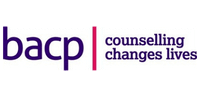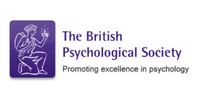Person-centred Therapy
Person-Centred Therapy is an approach for working with individuals who have experienced mental health difficulties and distress. In other words, the focus of this therapy is on the individual’s needs and concerns, rather than looking at them from a medical perspective.
It aims to provide a safe and supportive environment in which the individual can explore their thoughts and feelings without fear of judgment or criticism.
This can help them to develop their own solutions and insights into the issues they are facing. Some people may find Person-Centred Therapy to be helpful in addition to other approaches, such as CBT.

What is Person-Centred Therapies
Person-Centred Therapy is a non-directive approach to counselling and therapy that was developed by Carl Rogers. Rogers believed that everyone has the potential to grow and develop, given the right conditions.
This therapy focuses on helping individuals to explore their thoughts and feelings, without fear of judgement or criticism. It is often used in conjunction with other approaches, such as CBT, for helping people to manage mental health conditions.
The key conditions that Rogers identified are:
Empathy:
Seeking to understand the individual from their own frame of reference
Unconditional positive regard:
Accepting the individual as they are, without judgement
Congruence:
Congruence between what the therapist says and how they behave
These conditions create a safe and supportive environment in which the individual can explore their thoughts and feelings, without fear of judgement or criticism.
Person-Centred Therapy is a non-directive approach, which means that the therapist does not give advice or tell the individual what to do. Instead, they help the individual to develop their own solutions and insights into the issues that they are facing.
How can Person-centred Therapy help?
Person-Centred Therapy can help people who have experienced mental health difficulties and distress, by providing a safe and supportive environment in which they can explore their thoughts and feelings.
This can help you to develop your own solutions and insights into the issues you are facing. It can also be helpful in developing your relationship with yourself and understanding what is right for you.
What to expect from Person-Centred Therapy
Person-Centred Therapy is a non-directive approach, which means that the therapist does not give advice or tell the individual what to do. Instead, they help the individual to develop their own solutions and insights into the challenges that they are facing.
The therapist will aim to create a safe and supportive environment, in which the individual can feel comfortable discussing their thoughts and feelings. The therapist may also use techniques from other approaches, such as CBT, to help the individual navigate their way through life.
Does person centred therapy have any side effects?
Like many other types of therapy, person-centred therapy may have some potential side effects. These can include feelings of stress or anxiety, as well as changes in emotions and behaviours.
Overall, person-centred therapy can be a useful tool for helping individuals to cope with life concerns and distress. It aims to provide a supportive and non-judgemental environment in which the individual can explore their thoughts and feelings, without feeling pressured or judged. If you are considering starting person-centred therapy, talk to us about whether this would be the right approach for you to help you achieve your goals.
What happens in Person-centred Therapy sessions?
During Person-centred Therapy sessions, the therapist will aim to create a safe and supportive environment, in which the individual can feel comfortable discussing their thoughts and feelings. The therapist may also use techniques from other approaches, such as CBT, to help the individual to manage their mental health condition
Person-centred therapy is a non-directive approach, which means that the therapist does not give advice or tell the individual what to do. Instead, they help the individual to develop their own solutions and insights into the issues that they are facing
The therapist will aim to create a safe and supportive environment, in which the individual can feel comfortable discussing their thoughts and feelings. They may also ask the individual to engage in various experiential exercises, such as journaling or art therapy, in order to explore their emotions and experiences more deeply. Overall, the goal of person-centred therapy is to provide a supportive and collaborative environment for the individual to work through their concerns.
How effective is Person-centred Therapy?
Person-centred therapy has been found to be effective in treating a variety of mental health conditions, such as anxiety, depression, and post-traumatic stress disorder (PTSD). It has also been found to be helpful in reducing symptoms of distress and improving overall well-being
A number of studies have found that person-centred therapy is as effective as other types of therapy, such as CBT, in treating some mental health conditions.
Getting Support
If you are considering starting person-centred therapy, it is important to speak with a healthcare professional first. They can help you to determine whether this approach is right for your needs, and will be able to guide you through the process of starting therapy
There are also several online resources available that can provide support and guidance for those interested in starting person-centred therapy. For example, websites like Alinea Psychologies can provide information and resources on different types of therapy, as well as tips for managing mental health conditions.
Ultimately, seeking support from a healthcare professional or online resource is the best way to start your journey towards improved mental health through person-centred therapy.
If you are struggling with any mental health issues, it is important to seek professional help. There are many resources available to help you get the treatment you need.






